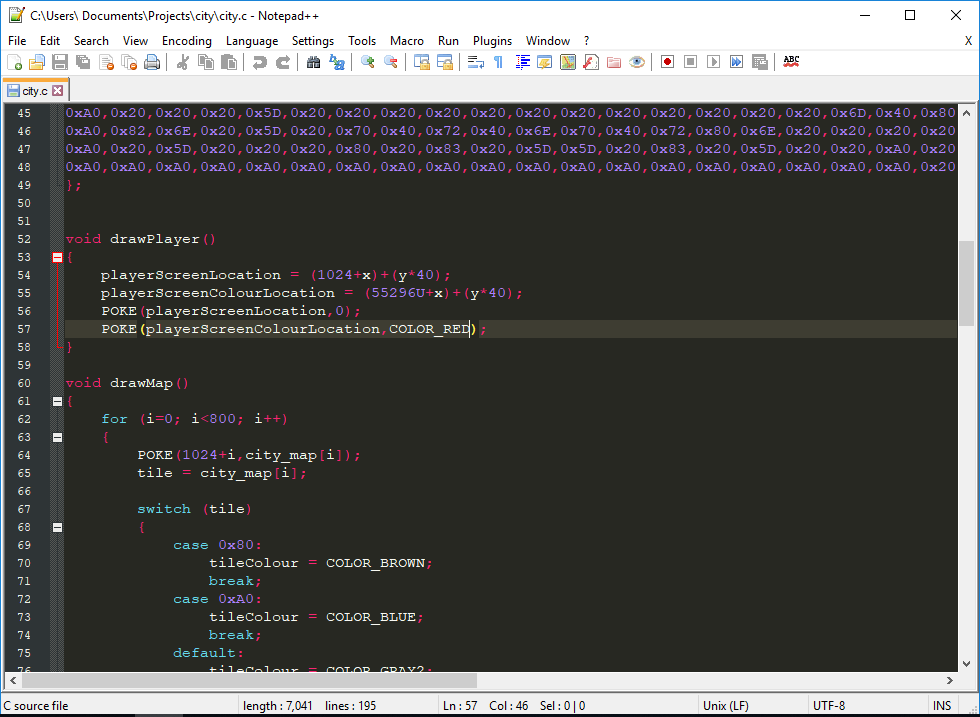Since my last post I’ve revisited the CC65 cross compiler which you can use to write C programs on 6502 based systems such as the Commodore 64, Apple II and Atari 8bit.
I had been using CC65 for a few months, sketching out the beginnings of a C64 CRPG but had run into problems managing the memory configuration required for custom graphics. I’d moved onto using CBM PRG Studio and programming in 6502 assembly code which meant my code ran very quick but I was finding was slowing down my development time compared to using C in the past.

Now I’m not much of a programmer in any sense of the word but I probably have the most experience of using the C language overall so I was finding 6502 assembly language time consuming to use and my game development time is very limited and I’m not really trying to do anything fancy technically by the standards of C64 games.
There is a lot of documentation online for CC65 but I was lacking an example of how to do a simple custom character set and use code overlays for swapping code in and out of the C64’s 64K of memory from disk. Most of the famous CRPGs I grew up with such as Ultima and Alternate Reality use this method to make the most of the machine’s limited memory by modern standards. I just couldn’t get this to work and gave up frustrated.
I noticed this week that CC65 had been used to create some of the code in Ultima IV Remastered for the C64. After this I came across a CC65 example online that included both a custom character set and code overlays and worked out how to compile it with a custom linker file. This determines how the memory map for the program is set up and where any external data files or graphic data should go. Once I had this working it was relatively easy to load in my modified character set and recreate my map code in C, display it on the screen and have a player marker move around the example map. I also was able to automate my compilation process with a single key press from within Notepad++ and run the resulting program in the Vice emulator which felt pretty smooth.

The main reason I was originally attracted to CC65 was that I love the idea of using C and being able to then reuse the code on other 6502 based platforms as well as modern PCs and operating systems. CC65 also has special support for some systems including the C64 so that you reference the C64 hardware directly within your C code. As CC65 includes a full assembler in its tool chain, you still have the option of using assembly language within your C program where extra performance is needed and tweaking the generated code. I’ll post more about CC65 in a future post; where to get it and provide a brief example and possibly a video of how to do the things I was struggling with in the hope they help others get started.